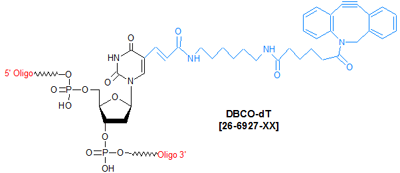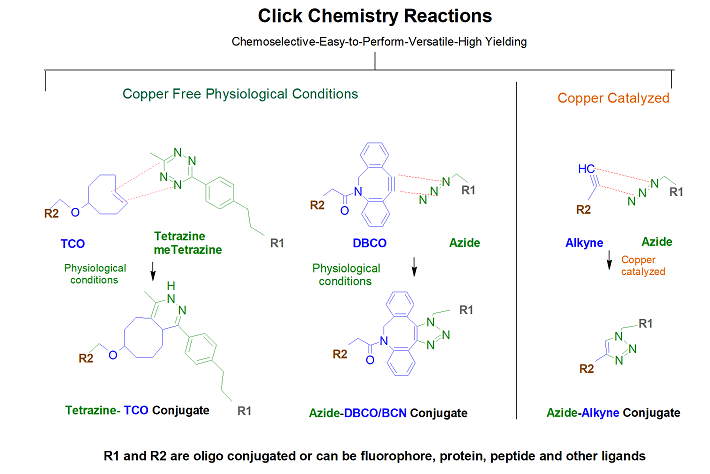In this section: Introduction | Quality Control | Purification | Modifications | Long Oligos | Price List
In this section: Introduction | Molecular Beacon FAQ's | Fluorescent Probes Price List | Other Fluorescent Molecular Probes
In this section: SPCT | DME SPCT Intro | Order DME TaqMan® Assays SPCT | SNP PCT Search | Gene Expression Assays | SPCT Design Center | GeneAssays
In this section: RNA Oligonucleotides | Quality Control | Purification | Modifications | RNAi Explorer™ Products and Prices | Custom RNAi | RNAi Design Guidelines | SmartBase™ siRNA Modifications | shRNA Explorer™
In this section: PCR Amplification & Analysis
In this section: Introduction | Genemer™ | GeneProber™ | Prober™ Gene Detection Kits | GScan™ Gene Detection Kits | Genemer™ Control DNA | Infectious Diseases
In this section: Gene Construction
In this section: Introduction | The Omni-Clean™ System | The Omni-Pure™ Plasmid Purification System | The Omni-Pure™ Genomic DNA Purification System | Viral DNA & RNA Purification | Microbial DNA Purification | Plant DNA Purification
In this section: Introduction | Quality Control | Purification | Modifications | Long Oligos | Price List
In this section: Introduction | Molecular Beacon FAQ's | Fluorescent Probes Price List | Other Fluorescent Molecular Probes
In this section: SPCT | DME SPCT Intro | Order DME TaqMan® Assays SPCT | SNP PCT Search | Gene Expression Assays | SPCT Design Center | GeneAssays
In this section: RNA Oligonucleotides | Quality Control | Purification | Modifications | RNAi Explorer™ Products and Prices | Custom RNAi | RNAi Design Guidelines | SmartBase™ siRNA Modifications | shRNA Explorer™
In this section: PCR Amplification & Analysis
In this section: Introduction | Genemer™ | GeneProber™ | Prober™ Gene Detection Kits | GScan™ Gene Detection Kits | Genemer™ Control DNA | Infectious Diseases
In this section: Gene Construction
In this section: Introduction | The Omni-Clean™ System | The Omni-Pure™ Plasmid Purification System | The Omni-Pure™ Genomic DNA Purification System | Viral DNA & RNA Purification | Microbial DNA Purification | Plant DNA Purification
DBCO-dT

Modification : DBCO-dT
Catalog Reference Number
Category
Modification Code
5 Prime
3 Prime
Internal
Molecular Weight (mw)
Extinction Coeficient (ec)
Technical Info (pdf)
Absorbance MAX
Emission MAX
Absorbance EC
26-6927
Click Chemistry
[DBCO-dT]
Y
N
N
773.77
-
PS26-6927.pdf
-
-
-
| Catalog No | Scale | Price | | 26-6927-06 | 5 umol | $2,965.50 |
Click here for a complete list of Click Chemistry Oligo Modifications
DBCO-TEG, DBCO-dT and DBCO Serinol are discontinued modifications due to their instability during direct oligo synthesis protocols. We offer a range of post synthesis DBCO NHS modifications as alternate. See above related modifications.
DBCO (dibenzocyclooctynes, DBCO) conjugation chemistry is based on the reaction of a dibenzylcyclooctyne (DBCO) linker with an azide linker to form a stable triazole. The dibenzocyclooctyne group (DBCO) allows Copper-free Click Chemistry to be done with live cells, whole organisms, and non-living samples. DBCO groups will preferentially and spontaneously label molecules containing azide groups (N3). Within physiological temperature and pH ranges, the DBCO group does not react with amines or hydroxyls, which are naturally present in many biomolecules. Reaction of the DBCO group with the azide group is significantly faster than with the sulfhydryl group (SH, thiol).
Cyclooctyne-based modifications offers the ease of copper-free click reagents. These are simple to use and has excellent click performance in 17 hours or less at room temperature. Gene Link offers 5' DBCO-TEG for preparing oligos with 5' DBCO and a 15 tom triethylene glycol spacer arm, DBCO-dT is used for inserting a DBCO group preferably at the 5' or internally within 3-4 bases from the 5' and DBCO-sulfo-NHS Ester is also offered for post-synthesis conjugation reactions. DBCO-modified oligos may be conjugated with azides in organic solvents, such as DMSO, or aqeous buffers. Depending on the azide used, the reaction will go to completion in 4-17 hours at room temperature.
Glen Report 27.1: Technical Brief - DBCO-dT - An Unusual Case of Iodine Sensitivity

- DBCO-dT
|
|
